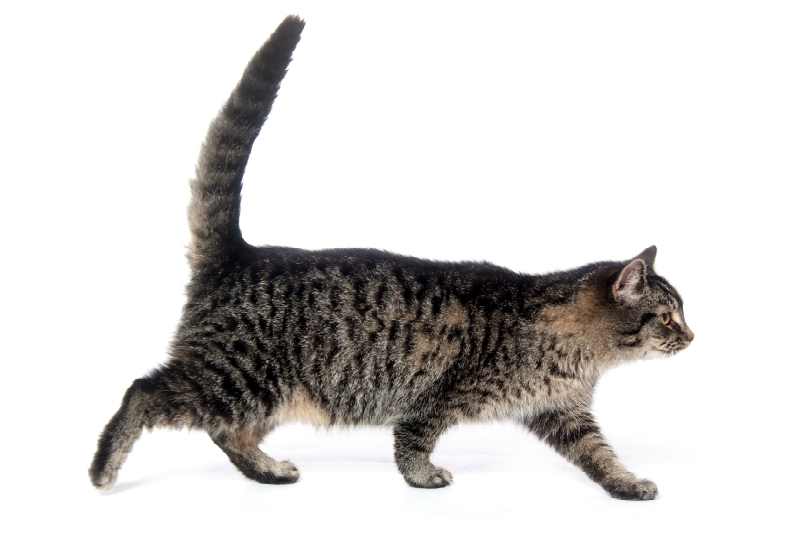I was watching our cat the other day and noticed that it’s tail was behaving in different ways. Dependant of the situation it seemed that Nipper would make different shapes or movements with its tail. This got me thinking and so I decided to do some research about what cats use their tails for and what the shapes and movements mean. There are a lot of cat tail facts which I will discuss.
Below are the things that I learned. Some of these facts and reasons are pretty cool and will allow you to understand your own cat better! I love writing about these curious cat questions here at The Fine Cat.
These are the reasons why cats have tails.
Cats tails are absolutely vital and they use them in a variety of different ways. Below is a list of the things that a cat uses its tail for.
- Balance and agility.
- A counter weight.
- Communicating with humans.
- Communicating with other cats.
- Expressing their emotions.
Now that we know the main reasons that a cat uses it tail I will go a little deeper. Read on to find out how a cat uses to communicate and how you can understand it. Also other cat tail facts and interesting things.
This is what a cats tail is made from.
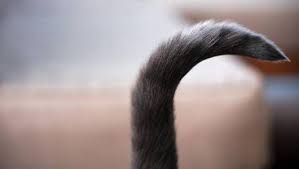
What is a cats tail made of? This is one of the cat tail facts.
A cats tail is made mainly of bone. In actual fact a cats tail has a total of between 19-23 separate vertebrae depending on which breed of cat. That is amazingly makes up nearly 10% of the cats bones in its whole body.
Each of these vertebrae is connected by a complex system of tendons, ligaments and muscles. With this combination the cat has superior control and movement of its tail and can shape and position it any which way that it chooses. With lightening fast movements and reactions.
The average length of a cats tail, cat tail facts
Different breeds of cats have different length tails and no two are completely identical. However some very clever vets and animal experts have come to the conclusion that an average female cats tail will be 9.9 inches and the average male is 11 inches.
Cats use their tails for balance and agility, cat tail facts
One of the biggest reasons that your cat has a powerful, quick and complex tail is for balance. Just watch a cats tail when it is running around or even jumping onto something. The tail will be swinging around to counter balance the cats body at different stages of the jump. Make sure to provide your cat a shelf to hang on.
This can be seen very well when a cat is balancing as it walks along the top of a garden fence or other high and narrow object.
A cat will use its tail when it is chasing its prey. The tail allows the cat to make pinpoint accurate tight turns. This makes the cat one agile and proficient hunter!
A cat communicates with its tail, cat tail facts
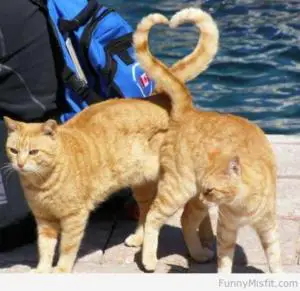
These cats are communicating with their tales. Some crazy cat tail facts.
Now I know this may sound strange but humour me for a minute. Your cat uses its tail to communicate with you! That’s right. You can actually find out what your cat is thinking and feeling by taking a look at how it’s tail is behaving. Below are some of the common cat tail movements and what they mean. Let me know in the comments section which ones you see your cat doing.
Tail up high.
A cat walking round with its tail up high and straight is a cat that is onto something. You will usually notice this when your cat spots some prey or something else that has caught its attention. It will be on high alert and ready to launch off and pounce at a moments notice.
This tail movement can also be a sign that your cat is being territorial. If there is another cat homing in on its turf you may see a straight high tail. This is your cat telling the other one “do not mess with me”!
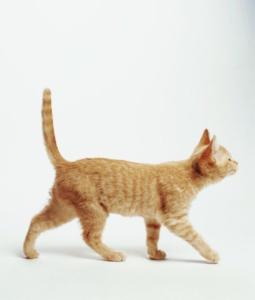
When a cat has a straight tail it is on a mission. One of the cat tail facts.
Tail down low.
If you see a cat with its tail down low it will usually mean that your cat is feeling afraid. Emotions such as fear and anxiety cause this and you will usually see that the cat is trying to also keep a low profile.
A swishing cat tail.
This is one of them signs that you need to keep watch for when you are playing with your cat. Sometimes cats can be quite short tempered and when it has had enough of something its tail will usually go like this. Fast swishing of a cats tail means that it is getting annoyed and angry. You can pretty much guarantee that it’s next move will be to last out at whatever is annoying it.
A puffed out cat tail.
Much like when you see a dog with all its hairs standing on end on its back. A cats tail hairs will stand on end and puff out. This is a signal that your cat is very angry. Usually it will happen before a cat fight or if your cat does not like dogs but gets approached by one.
Tail shaped like a question mark.
This interesting tail movement is my personal favourite one. The tail will be upright but the tip will be curled towards the cats head kind of like a question mark shape.
This movement signals that your cat is in an inquisitive or mischievous kind of move. It is looking for something cheeks to do. Our cat used to do this quite a lot before it swiped or bit a foot or hand that was hanging out from the bed.
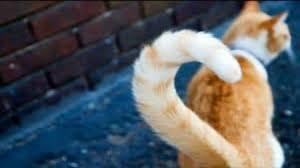
What can you learn from watching your cats tail.
Never pull a cats tail it’s can cause serious permanent damage.
This one is a little bit of a warning and something to make sure that the kids know. I did not know this myself until I researched.
Pulling a cats tail can cause it permanent damage. You see cats have many nerves that run down its tail much like our own spinal cords. In fact a cats tail is an extension to its spinal structure!
Cats tails can suffer horrible injuries sometimes like dislocations and fractures. If you notice any of the below symptoms in your cats tail you should take it to a vet as soon as possible.
- A permanent kink in the tail.
- Signs of pain along the length of the tail.
- Drooping of the tail or a struggle to lift it.
- No movement in the tail at all.
A cat can live and adjust without a tail.
Unfortunately even thought the old sayings go “cats have 9 lives” and “cats always land on their feet” it is not true. Cats can get injured especially around their tails.
Sometimes through injury or disease a cat may have to have part or all of its tail amputated. Many people including myself would assume that this would mean that a cat could not balance anymore.
This is not true though and cats that have their tales amputated can adapt and learn how to live without it. They can actually still be just as fast, nimble and efficient as they were with a tail!
Some cats are born without tails.
Not all breeds of cat are born with a tail. The Manx cat is a breed that is thought to have no tail at all although they usually have a tiny little stump. Even though they do not have tails they are still highly skilled hunters with great balance and agility. Because of this they are usually kept by farmers who need pest control for mouse and rat problems.
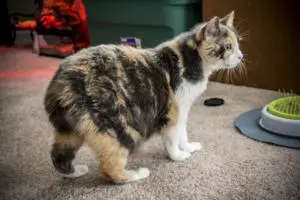
Minx cats are born with no tail at all.
Conclusion…
A cats tail is an incredibly important and complex structure that has been perfectly evolved by years of hunting.
I find it amazing how our feline friends ya their tales to communicate with us and other cats. Doing this research has really opened up my eyes to what our cat is trying to tell us.
Let me know below in the comments section what movements you have noticed from your own cat. Also if you enjoyed this blog post why not check out some of our other curious cat question posts.
